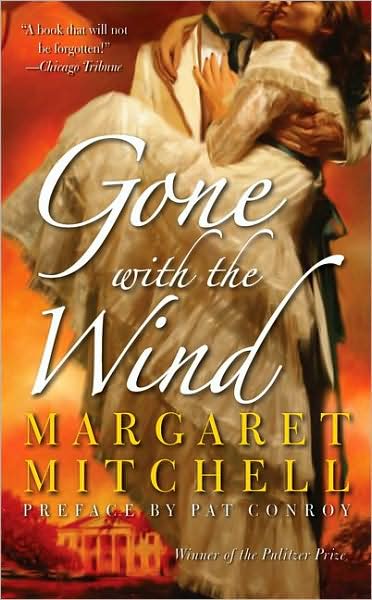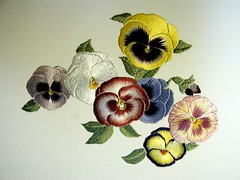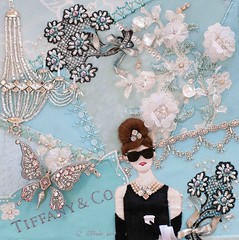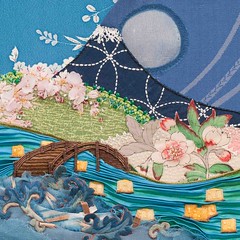Thank you for your words, your photography, and your most beautiful book, From the Land Comes the Cloth: A journey to the heart of the Hebrides.

Thank you for your ability to connect to a land, its people and its cloth and to create a work of art that connects me to them.
As you say in your book,
Colour reflects our moods and the seasons; it calms and excites the senses. Different textures add depth and definition. The light and shadow of the Outer Hebrides and its unique landscape of ancient stones, mountains, loch, machair, moorland, beach and ocean slowed me to a standstill. As I began to photograph the landscape, the people and the tweed, I started to see patterns emerge. A beat began and the rhythm of Harris Tweed flowed into my consciousness and into my pictures.

A piece of Harris Tweed is an art form. Caught up in the warp and weft is a combination of inherited traditions, individual imagination, craftsmanship and skill. This artistry and ingenuity in the weaver's work is a genuine appreciation of the land, told in wool...The glorious landscape and cloth are undeniably entwined.

I am grateful for your heart that captured the true essence of the people of the Outer Hebrides. I am grateful for your talent and patience as a photographer for capturing the light, the people, the land and the cloth in a way that I could not.
I am grateful for this book that moves me every time I sit down with its 430 pages of beauty.
Its weight grounds me to the earth again and reminds me how I felt for those seven hours I spent on the Isles of Harris and Lewis. Through your work, I experience the interrelationships between sea, land, sky, plants and people and feel the rhythm of their conjoined heartbeat.

For those who cannot afford to travel to the Outer Hebrides of Scotland where your story is told, thank you for this film that you prepared for them to watch:
HEART OF THE HEBRIDES from Ian Lawson on Vimeo.
And for those who are not able to buy the book, thank you for the 108-page preview that you so generously share on your website.
I am still trying to figure out why Scotland has touched me so. And your book is helping me think it through. There is spirituality woven into its pages guiding me along.
Thank you Ian Lawson. You have created a masterful work. My counsel and companion until I can visit the Hebrides again.
[Note: Through Ian's website, I have found he is releasing another book entitled Shepherdess: Seasons of my Life which follows the story of Alison O'Neill as she tends her hill farm in Cumbria. Gerry Krueger, this video is for you. It's 13 minutes of absolutely wonderful.]



























































